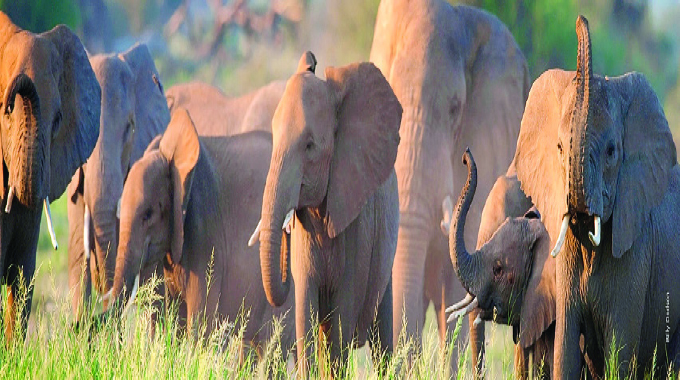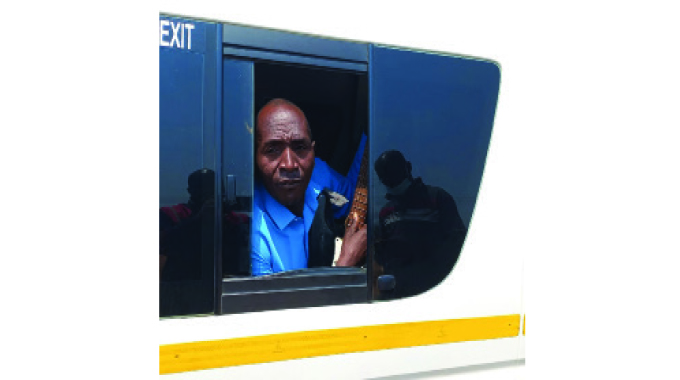Community wildlife conservation programs should go beyond meetings, self-help projects and poacher arrests

Mahlabezulu Zulu
A number of approaches have been used to safeguard different natural resources. Use, and vulnerability mainly depends on its social, and economic value.
Wildlife, considerably more valuable- has generated a lot of interest as concerned parties try to apply different approaches to ensure that it is protected. It is unfortunate that some of the wildlife species, like animals’ numbers that dwindled because human beings always target them as a means of survival or tampered with their habitats.
Through researches, these wildlife species have been classified as ‘Endangered’ or ‘’Rare’’ for example the Painted Dog, Rhinos, Pangolin and many others
Various platforms have been used to promote co-existence of human beings and wildlife, these help to protect wildlife whose continuous existence will eventually benefit human beings. Conservation education programmes in schools as well as other institutes of higher learning, and poachers’ arrests are some of the approaches which have been used.
Depending on the approach, and environment where these wildlife conservation programmes are being executed-some of the approaches have become a success story as records of poaching in the targeted areas have been drastically reduced, and wildlife conservation has become part of the community’s culture, for example, community leaders or individuals spearheading wildlife conservation programs in respective communities. Some of these platforms have been considered to be more effective than others.
Community meetings are mainly held to trade ideas how to relate with wildlife, self -help projects cushion communities so that they don’t exert much pressure on wildlife for survival, conservation education in communities and institutes of learning are meant to inculcate a sense of responsibility through change of mindset.
Sometimes local community members from neighboring safari, national park or forestry area are always prioritised when it comes to employment opportunities by different related organisations – for anyone who would have got the opportunity to be employed through this avenue-it will be like biting your own tail if you don’t play a pivotal role in conserving wildlife.
Unlike overseas, where certain wild animal species are kept in captivity, like in Zoos to educate the public on their importance, locally we have few wildlife orphanages like Chipangali Wildlife Orphanage. A number of wildlife species are kept in Zoos as “Ambassador Animals’’- these are sample animals which represents other animals of the same specie.
It’s unfortunate that some species like Baboons, due to their huge population have been considered as of no “Conservation Value”, that is, their population doesn’t warrant any conservation, and their uncontrollable behavior deprives them the opportunity to be displayed in these Zoos.
It’s good that in these Zoos, educational programs help the public understand and love wildlife through seeing, and sometimes touching these animals, for example, a tortoise, chameleon, harmless snakes and this has sometimes reduced the phobia people have.
For evidence sake, we have seen how people from such countries are relating or admiring the beauty of our wild animals they see in our country’s wildlife protected areas.
While this method can be considered to be one of the best method of bringing people closer to wildlife as compared to the other approaches which can be used to conserve wildlife, it is unfortunate that a similar programme can be used but the approach not popular in our country, for example, a yearly programme in which certain representatives of wildlife neighboring community can be offered game viewing opportunities in a game reserve or park area.
In this case, the team will be given the opportunity to admire the beauty of wildlife they are encouraged to conserve. If people are given such an opportunity, they will see some of these rare species which do not visit human habitats, for example, the Painted Dogs and Sables.
While this is considered to be one of the effective methods making communities understand wildlife, it is unfortunate that a few organizations employ it. It’s good that some of the wildlife organisations have introduced children’s nature interactive activities in their centers, and these activities have brought this target group closer to understanding wildlife and the importance of conserving it.
From our experiences as human beings, we have lifelong neighbors which we sometimes visit and share ideas- such visits bring understanding, and bonding between us through knowing family members.
Some of these community wildlife conservation approaches used are like trying to create a bond ‘’ between you, and your neighbor which you don’t know much about’’, for example, introducing a self-help project whose goal is to conserve wild life.
Because of lack resources, most community members don’t get the opportunity to visit and see the beauty of wildlife and such communities are not aware of some of the wild animal species which are found in their neighboring wildlife protected areas because some of the wild animal species rarely approach human habitats.
Offering such a programme where the community is given the opportunity to visit wildlife sanctuaries through activities like game viewing will be a motivational way of encouraging them to conserve wildlife – this will creates a good bond between communities and wildlife.
While the expense of running such an activity is a stumbling block to wildlife conservation projects-a joint venture program for such communities can be organized and this would involve various stakeholders, that is, exclusion of payment of park fee by the responsible authority, offering of an ideal vehicle and necessary provisions by the others.
It is of much benevolent for wildlife stakeholders partaking wildlife conservation programmes in some communities to realise that joint venture programmes are sometimes important, and effective-this also avoids duplication programs which sometimes won’t be effective!
*Mahlabezulu Zulu is a conservationist who has worked for various wildlife research, and conservation organisations in Hwange National Parks, and Fuller Forestry in Victoria Falls.
He can be contacted on 00263(0)713269827/0776196171. Email [email protected] or [email protected]











Comments